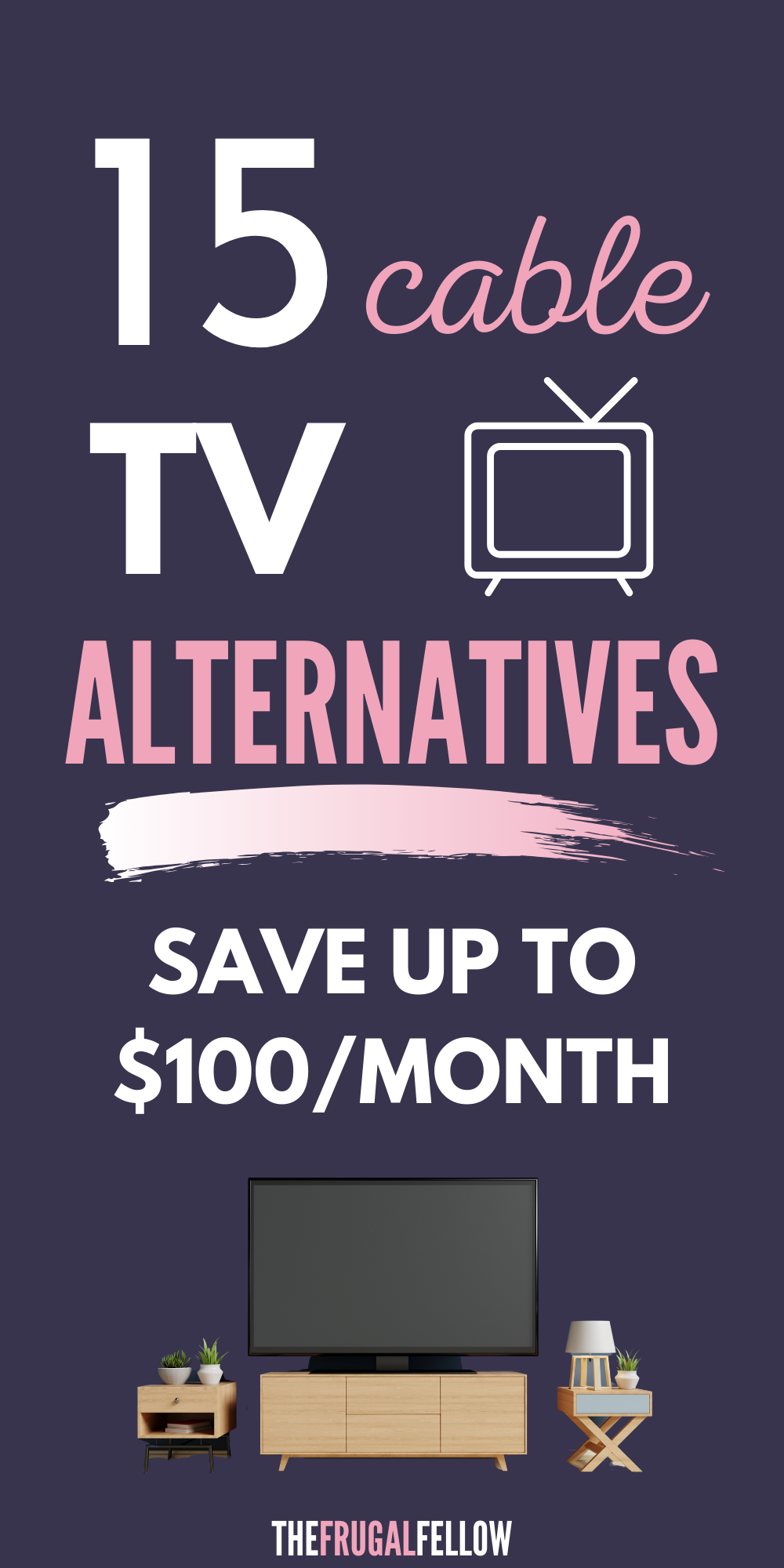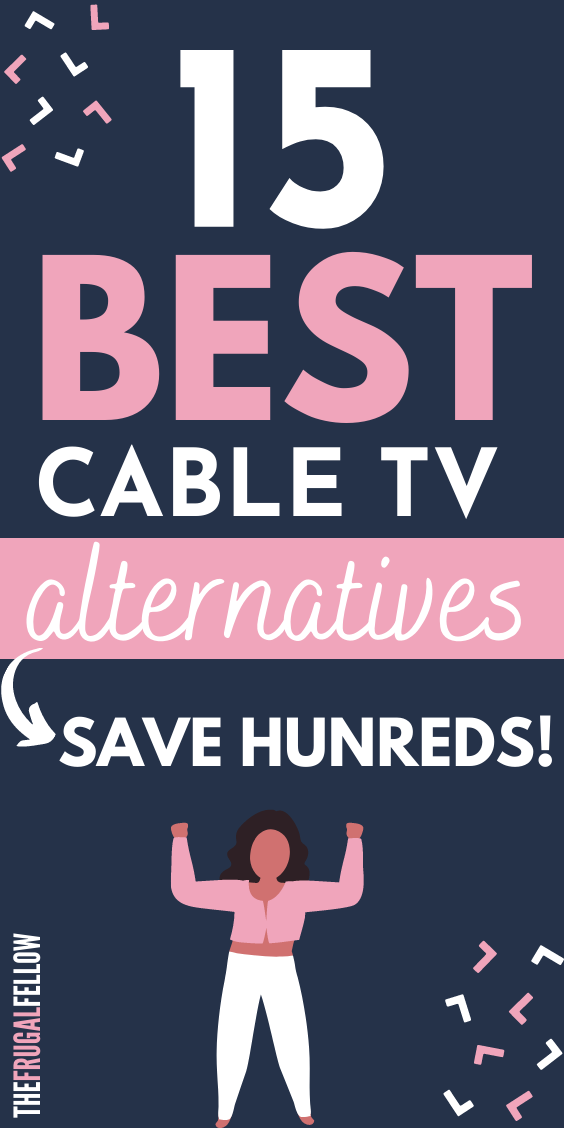Contents
ToggleIn the late 20th century, cable TV was all the range. But things have changed dramatically, and these days, people are looking for the best cable TV alternatives.
Why? Because cable TV can be expensive and can force you to pay for a huge amount of bloat in which you have no interest whatsoever. When was the last time you watched public access TV?
Times are also tough for many people these days. With so many people struggling just to make ends meet, they look to cut expenses to an absolute minimum.
Plus, with streaming services offer consumers more choice than ever.
Thus, it doesn’t necessarily make sense to pay for a package that has a whole channel dedicated to the weather, or home shopping, or whatever.
Maybe you watch those channels – if so, just swap in whichever channels you never watch. In any case, these days it makes little sense to keep paying for a service when you only use a fraction of it.
If your phone provider had packages for, say, 2 GB, 5 GB, and 10 GB of data, would you pay for 10 GB if you only use 1 GB per month? Of course not! You would call and have them downgrade you to 2 GB or maybe 5.
And that’s what this post is all about: finding a setup that works better for you rather than a one-size-fits-all solution that, frankly, doesn’t fit you well at all.
Streaming Services
This section of the list will cover services you can use to watch your favorite TV shows without a cable subscription. Most have a monthly fee (with one exception).
Here, we’ll break down all your different options and what each one has to offer.
1. Netflix
Yes, I know I’m not making any kind of revelation with this one. Still, Netflix is a streaming service that has taken the world by storm. It has been one of the main driving forces in the shift away from a cable-centric TV viewership.
Although Netflix has had a bit of a surge in recent years, it is by no means a new company. Certainly not in the world of the internet – the company was founded in 1997.
It’s difficult to know exactly how many titles Netflix has since its library is changing all the time, but it currently has about 167 million subscribers. One Quora estimated that Netflix has at least 36,000 unique titles. So they probably have many of your favorite TV shows.
Netflix has three plans that come in at $6.99/month, $15.49/month, and $22.99/month.
Given how much Netflix has to offer, it’s a great cable TV alternative and one of the best streaming services out there.
2. Hulu
While all of these are cable TV alternatives, some consider Hulu to be a Netflix alternative. However, each platform has good things to offer, and they aren’t necessarily direct replacements for one another.
For one thing, there are several popular shows available on Hulu you can’t watch anywhere else. Some example include “The Handmaid’s Tale,” “Black-ish,” and “Seinfeld”.
These shows are either Hulu original series or are not currently available elsewhere.
Hulu costs $7.99/month with ads or $17.99/month with no ads. You can get a 30-day free trial when you sign up. Additionally, you can opt for various bundles to add Disney+ or ESPN, each with different pricing.
3. Hulu+ Plus Live TV

4. Sling TV
Sling is pretty cool. It goes a long way in addressing the problem mention in the intro to this post – the fact that cable has historically forced people to pay for a bunch of programming they never watch.
You may still have some unwanted channels with Sling, but, again – it’s a big step in the right direction. The way it works is there are a couple of base packages to which you add additional channels (if desired).
Think of these as your “core” channels. The two base packages are called Sling Blue and Sling Orange.
Sling Orange
Sling Orange costs $40/month, comes with 30+ live channels, and focuses on live shows, sports, and news.

Sling Blue
Sling Blue costs $45/month, comes with 0+2 live channels, and focuses on local programming, news, and regional sports.

There is some variety in the programming between the two packages, but there are probably still some channels you won’t watch.
You can also go with Orange + Blue if you want. Overall, Sling is an interesting idea that has its place in today’s entertainment world.
5. YouTube TV
YouTube isn’t just about pre-recorded content anymore. These days, it has a separate service dedicated to live programming: YouTube TV.

YouTube TV is an all-in-one solution with 100+ channels, DVR, and great performance. It costs $72.99 per month for the base plan, which isn’t bad for a complete TV package. You can also additional features, like 4K for an extra $9.99/month.
And you can watch on a huge variety of platforms, including Xbox, Roku, Apple TV, and lots more.
YouTube TV is worth a look for cord-cutters everywhere.
6. DirecTV Stream
7. Amazon Prime Video
Prime Video, AKA Amazon Instant Video, has also been gaining popularity these days, and for easy-to-understand reasons. The main reason is that it comes with Amazon Prime, which is extremely popular these days.
According to some sources, Prime has over 100 million subscribers. Prime Video is included with an Amazon Prime subscription, which costs $14.99 per month or $139 per year.
Prime Video doesn’t have quite as wide a selection as Netflix for example, but it does have some originals that are worth watching. For example, I really enjoy “The Marvelous Mrs. Maisel.”
8. Apple TV+
If you’re interested in trying it, go to the page for Apple TV+ or Apple TV 4K.
9. Disney+
There’s a good chance you’ve already heard about Disney Plus; it made a pretty big splash when it was first released. Still, it’s worth mentioning here for all the Disney fans.
Of course, there is a ton of Disney content available with Disney including most of your favorite Disney movies. But remember that Disney is also whole- or part-owner of several other networks.
As a result, you can also view content from 20th Century Fox and ESPN.
Disney Plus Basic costs $7.99 per month; currently, only a monthly subscription is available for his tier. You can also opt for Disney+, Hulu, and ESPN rolled into one package for $14.99/month.
To watch Disney+, you can download it on Apple TV, Roku, Chromecast, Android TV, PS4, or Xbox.
10. Android TV
Oh, you thought we were done? Nope, there’s one more cable TV alternative to mention: Android TV.


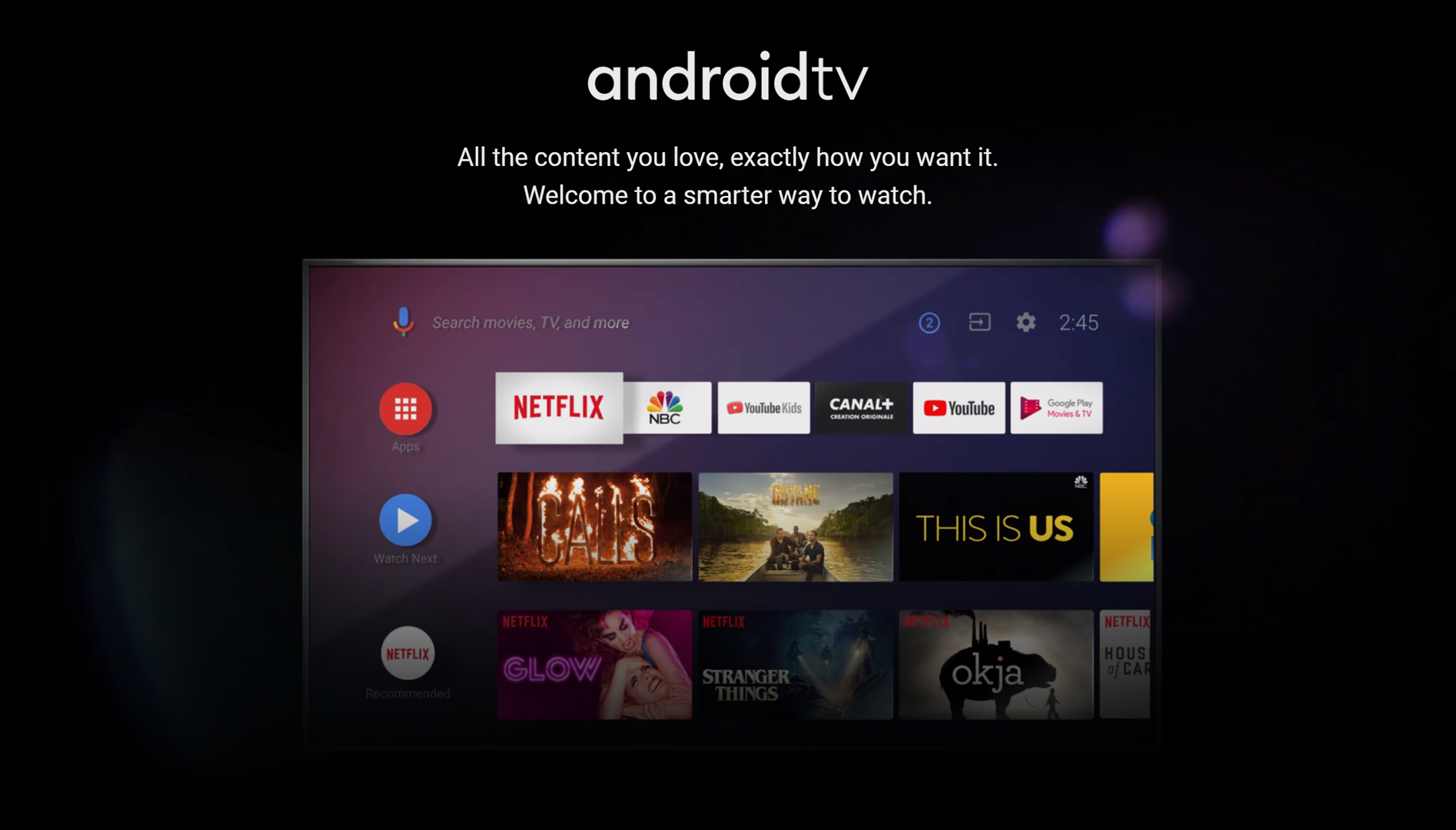
Android TV is exactly what it sounds like: a version of Android made for smart TVs. You can also get Android TV on streaming devices such as the Xiaomi Mi Box S. That said, the easiest way to get it is probably with a smart TV like the Hisense 55H8F.
All of your favorite apps can be loaded onto Android TV like Netflix, Hulu, Disney+, and plenty more.
And, unlike Apple TV, there is no monthly fee for Android TV, which definitely makes it worth considering.
11. fuboTV
fuboTV is a live TV streaming service that focuses on sports. That is useful considering live sports broadcasts are often one of the things missing from cable alternatives.
But with fuboTV, you can watch games from the NFL, NBA, MLB, NHL, and MLS. Not only that, but it also includes news, network television, and movies.
In all, you’ll be able to watch 100+ channels on this service. The base package starts at $79.99, which isn’t bad considering the amount of content. This plan comes with a 7-day free trial.
Streaming/Viewing Accessories
In general, you will need to use one of the following access in order to watch your content from the services above. Note that you can usually also view content using a computer in a web browser.
12. Local HD Broadcasts
Picking up an HD antenna can go along well in helping you cut the cord.
Mostly because these things work much better than the old-school antennas used to while giving you HD-quality TV. For my TV at home, I have the Mohu Leaf 50.

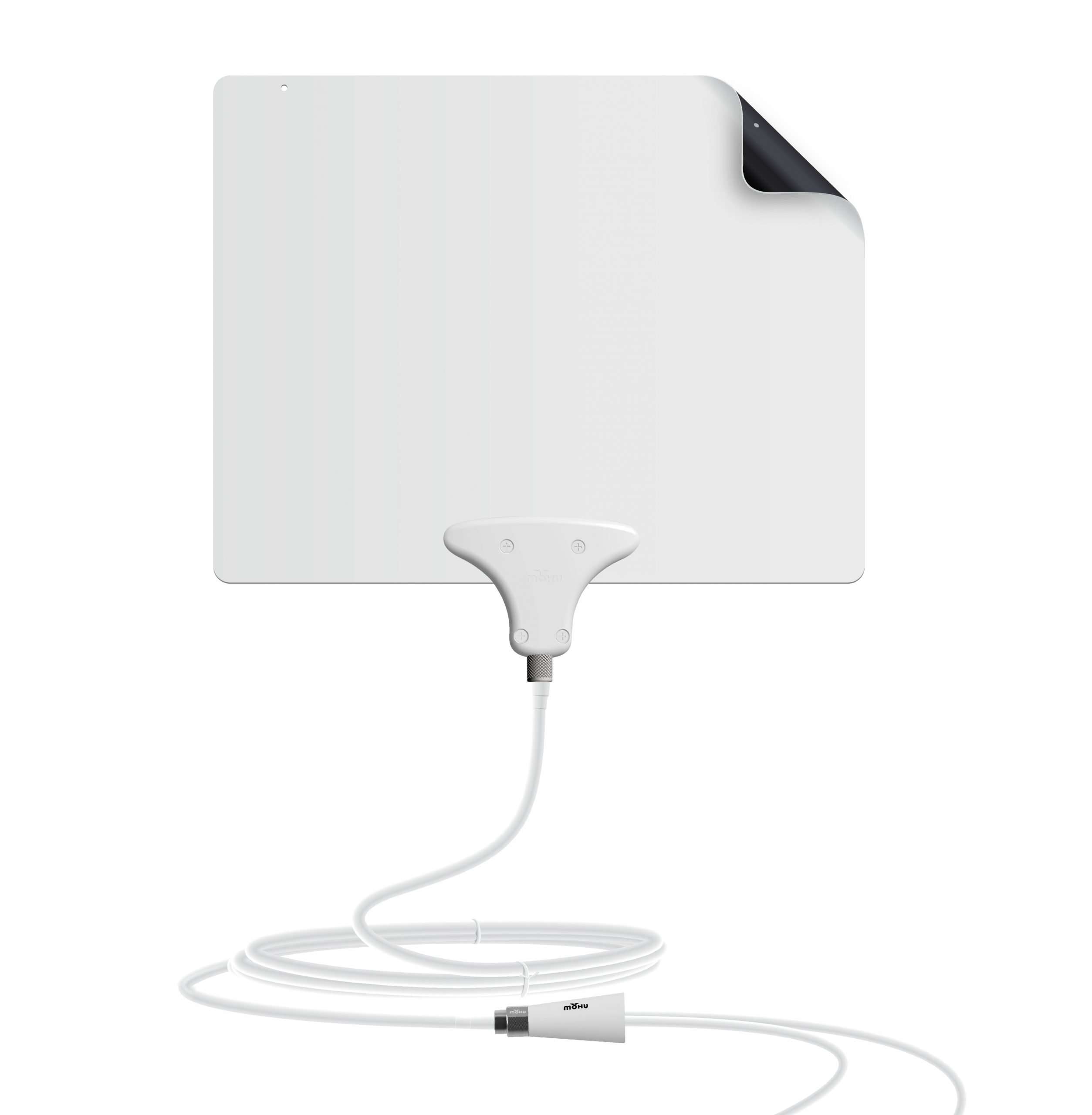
I’ve mentioned this one a couple of times on this site before, such as in my money-saving tips post or my money-saving challenge post. That’s because I think this is a great option that I wish I had in my life sooner!
How Do HD Antennas Work?
The way they work is actually quite simple. They pick up over-the-air HD programming, very much in the same way antennas did back in the 90s.
The biggest difference is that, indeed, you can get local broadcast channels in HD these days.
My antenna has includes a guide function, but there are also websites such as the FCC’s reception map that will tell you which channels you can expect to pick up in your location.
13. Amazon Fire TV Stick
The Fire Stick is a sub-heading of Prime Video because it’s more of an accessory than it is a standalone solution. Basically, the Fire Stick can be used on a “dumb TV” to turn it into a smart TV! Woot!
These things plug into the TV’s HDMI port and, of course, can add functionality to you TV such as Prime Video and dedicated apps for various networks. You can also use your TV as a stereo for streaming music.
Some people have also used Fire Sticks to run something called Kodi to get paid content for free. I don’t recommend that as it could lead to legal troubles. If you stick to Amazon’s native services though, you should be good.
14. Roku
The Roku name is nothing new to the world of streaming. Originally launched in 2008, Roku was one of the first streaming devices on the scene.


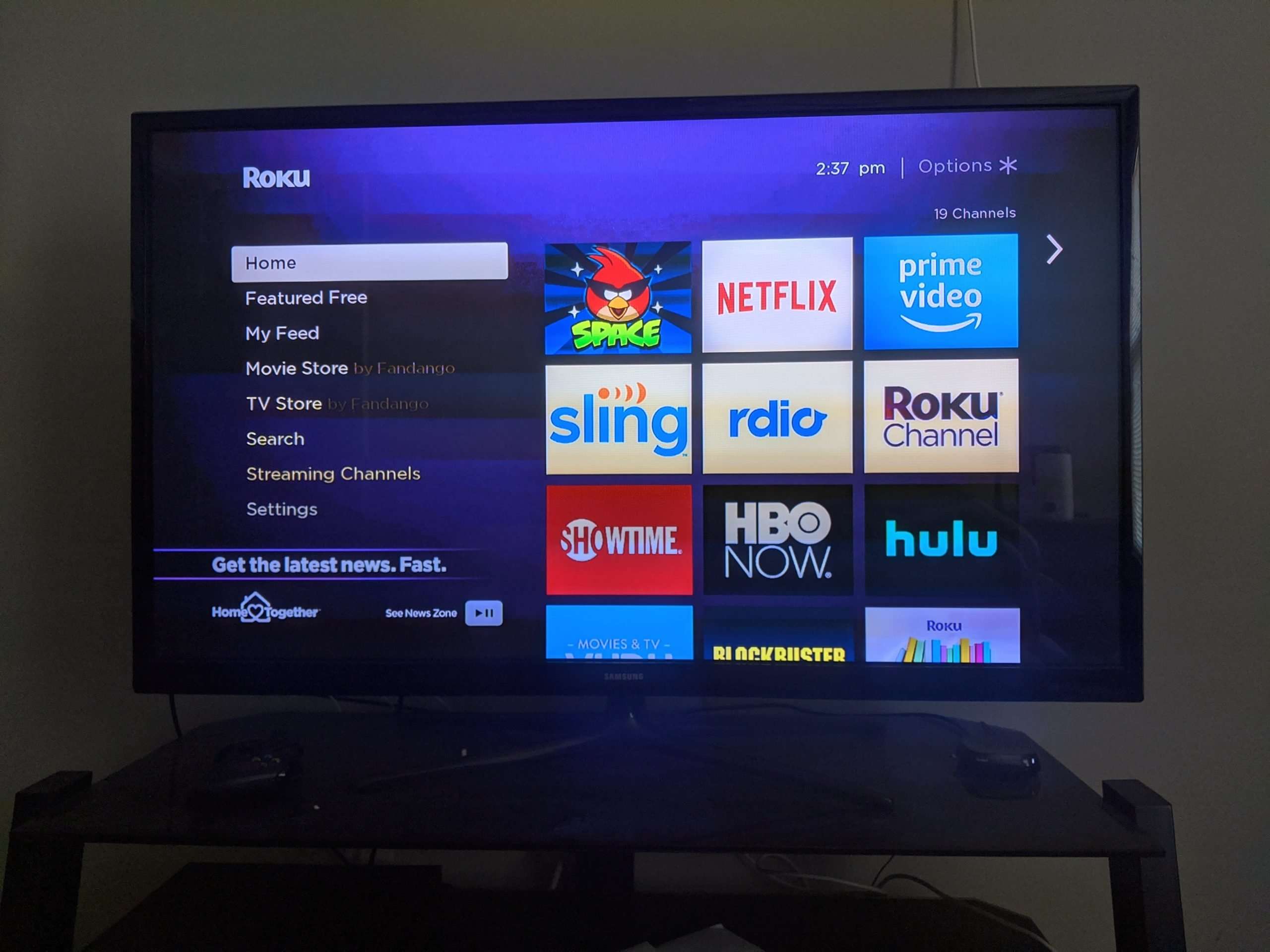
As you can see, Roku allows you to view a number of apps (including a few that are also on this list). Its simple, intuitive design makes streaming a breeze.
There are a few different device options, including Roku Express HD, Roku Ultra, and Roku Premiere.
Of course, many of the apps you install on your Roku may have a monthly cost, but there is no monthly cost for the Roku itself.
15. Chromecast
Google Chromecast costs $37.99 and is a dongle-style device that connects via your TV’s HDMI port. It enables you to stream content on TVs that may not otherwise have that functionality.
Of course, you can watch any and all content from Google given that this is a Google product. That includes YouTube and YouTube TV. But Google services are far from the only thing available on this device.
You can also watch Netflix, Hulu, and more.
Cable TV Alternatives: Conclusion
Clearly, there is no shortage of cable TV alternatives these days.
Whether you you download one of these apps or services directly to your smart TV or you use a separate streaming device, there are plenty of ways to get the exact TV experience you want.
And, in the process, cut back on your monthly cable bill.
That also means that, to a certain degree, consumers are no longer at the mercy of cable TV providers. More options means more power!
What is your favorite of these cable alternatives? Do you have another suggestion? Let us know in the comments.

